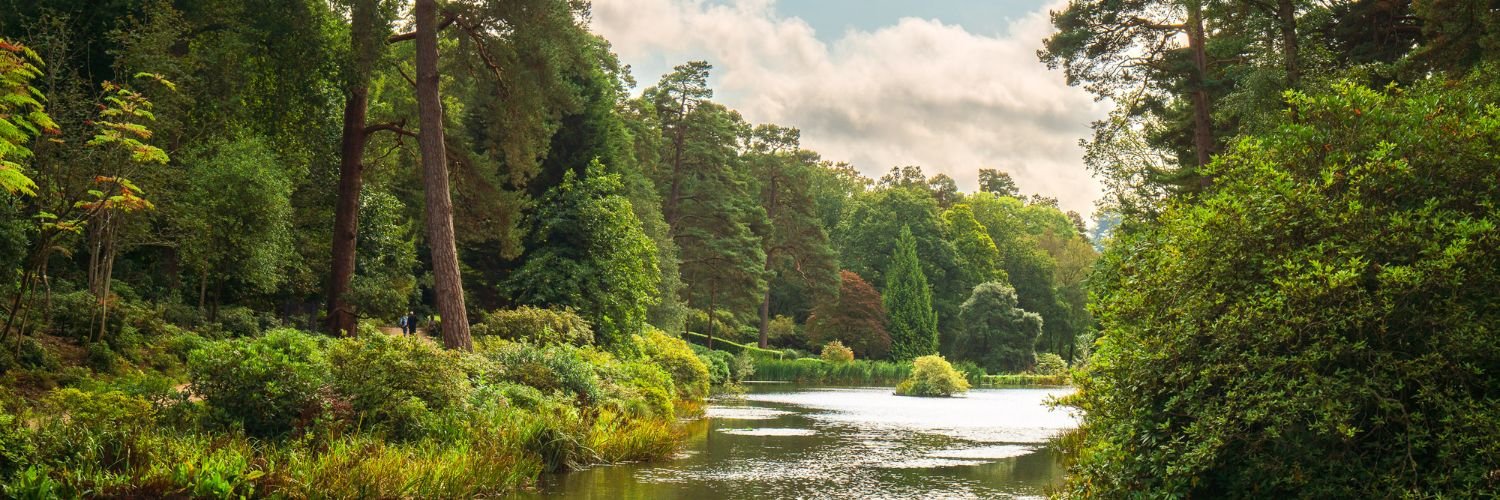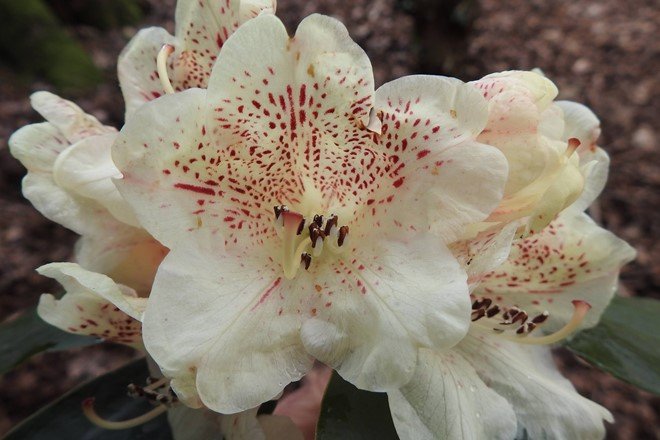Garden News | September 2024
Wow, doesn’t time fly?
It’s hard to believe that summer is starting its creep towards another autumn as we head into September again, although you could argue that it doesn’t feel like summer even got properly started this year! In fact, this summer has been quite similar to 2023, with fewer spells of higher temperatures and more instances of rainfall – a bit like the British summer holidays I remember as a child! While this has meant that there’s been less need for irrigation of our important plants for instance, it does mean that the grass and weeds have been growing more freely and that the transition from one season to the next might be more gradual this year perhaps. In the meantime, there is still plenty of seasonal floral interest to enjoy on your next visit until we enter ‘proper’ autumn.
September is one of my favourite times of the year, and not just because my birthday falls this month!
Often, the late summer floral interest is more rewarding than that of the height of the season, maybe because it catches the eye more readily and because you don’t necessarily expect to see as much. The Herbaceous Beds opposite Leonardslee House for instance will have an abundance of late season colour, with perhaps the Salvia collection in here being the most obvious. Salvia nutans (or Nodding Sage) and Salvia forskaehlei (aka Indigo Woodland Sage) are two recent favourite additions of mine, joining the likes of Salvia ‘Amistad’, various shades of Salvia viridis and S. ‘Black And Bloom’. If we keep deadheading them they should flower until the first frosts. Also in these borders you’ll be able to see late season Sedum (Ice Plant), Cleome (Spider Flower) and the striking heads of Eryngium agarvifolium, another new addition for 2024.
Around the house there will also be a huge range of late summer colour in the form of purple-leaved and orange-flowered Canna plants, the exotic Ricinus communis (Castor Oil Plant) and also the impressive Ensete ventricosum ‘Maurellii’, the Red Abyssinian Banana, for example. Once the frosts eventually hit both these areas we’ll cut back the spent herbaceous material and mulch the ground ready for next year. Some of the plants may have to be brought inside for protection but fingers crossed this winter won’t be as harsh as two years ago where we had extended periods of minus temperatures for days on end. The west side of the house has a different planting scheme due to the shadier aspect here. Full of amazing foliage textures and shades, one plant I’m really looking forward to seeing flowering here is Kirengeshoma palmata, or Yellow Wax Bell, that was only planted last autumn. Not often seen in many gardens, make sure you keep an eye out for the profusion of their primrose blooms.
Although the explosion of full autumn colour won’t hit its peak until October most likely, there will early signs in September with Acers such as the cut-leaved aconitifolium or Acer palmatum ‘Seiryu’ both good examples of early colour. Both can be found in the Rock Garden for instance where you’ll also be able to enjoy the Katsura Tree (Cercidiphyllum japonicum) start its season turn to shades of yellow and orange. In the same area, Rhododendron ‘Yellow Hammer’ often gives a second floral flush in early autumn to look out for that towards the end of the month too.
Around the lakes there will be lots of late summer wildlife still busying away. Common Darter dragonflies and Willow Emerald damselflies are both very active in September for instance. There will still be plenty of wildflowers to spot around the estate this month, including perhaps Devil’s Bit Scabious (Succisa pratensis) and various types of Goldenrod (Solidago sp.) for instance.
I have some exciting news to impart this month.
We recently received the People’s Choice award in the 2024 Plant Heritage Threatened Plant of the Year competition for our Rhododendron ‘Leonardslee Primrose’ plant. From our National Collection of Leonardslee Rhododendron hybrids, we could have chosen over 30 that have been designated either Threatened or Endangered by Plant Heritage, including 17 that are unique to Leonardslee. We selected a shortlist of 5 for submission that we felt had the most merit or interest and ‘Leonardslee Primrose’ was the plant that was selected by the panel. This interesting shrub flowers in March and April, when it is covered in many small, bell-shaped flowers that are a delicate translucent primrose-yellow colour, with maroon spots inside. It is a hybrid raised by Sir Edmund Loder before he died in 1920 from a cross between R. campylocarpum and a white-flowered form of R. arboretum, but introduced by Lady Loder in 1933 where it received the RHS Award of Merit. This is now classed as an Endangered plant, and rarely if ever found in cultivation outside of these gardens. We won a similar award last year for Rhododendron ‘The Dowager’ so many thanks to everyone who voted for us in this competition each time!
British & Irish Champions
While we’re on the subject of awards, we recently had TROBI (the Tree Register of Britain and Ireland) award us a further two British & Irish Champions and another five County Champions after their last tree measuring visit. This brings our current total of Champion Trees (either the tallest or widest recorded examples of their kind) to 35 British, a further four English and nearly 80 County champs, making almost 120 in total. Make sure you pick up one of our Champion Tree trail leaflets and National Collections leaflets when you’re next here to find out more.
September is a very busy time for the garden team here at Leonardslee as we start to switch from presentation tasks like weeding and edging to bigger restoration work including hedge cutting, restoration pruning and deadwooding.
Planting is another great job that ramps up again from September. Whereas much of the summer is too hot and dry to be placing tender, young plants in the ground, as autumn starts to creep into view, now is a great time to plan any replanting jobs. The soil will still be warm in September and early into autumn, which will aid root establishment, but it will also be moist from the late summer showers. This means that the plants will be less likely to suffer from drought stress. New plants will have a couple of months to get their roots down and tap into the soil nutrients before Winter hits and growth stops. We’ll be planting, planning, ordering and quarantining plants for a number of areas here at Leonardslee this month including plenty of trees and shrubs that will continue to increase our seasonal offer outside of spring. Watch this space for more details.
Plenty to be getting on with then and plenty to see and do here as we head into September at Leonardslee. Don’t forget there are bookable garden tours on Monday September 2nd and Wednesday September 18th this month. We look forward to seeing you here in the garden again soon
Jamie Harris, Head Gardener







